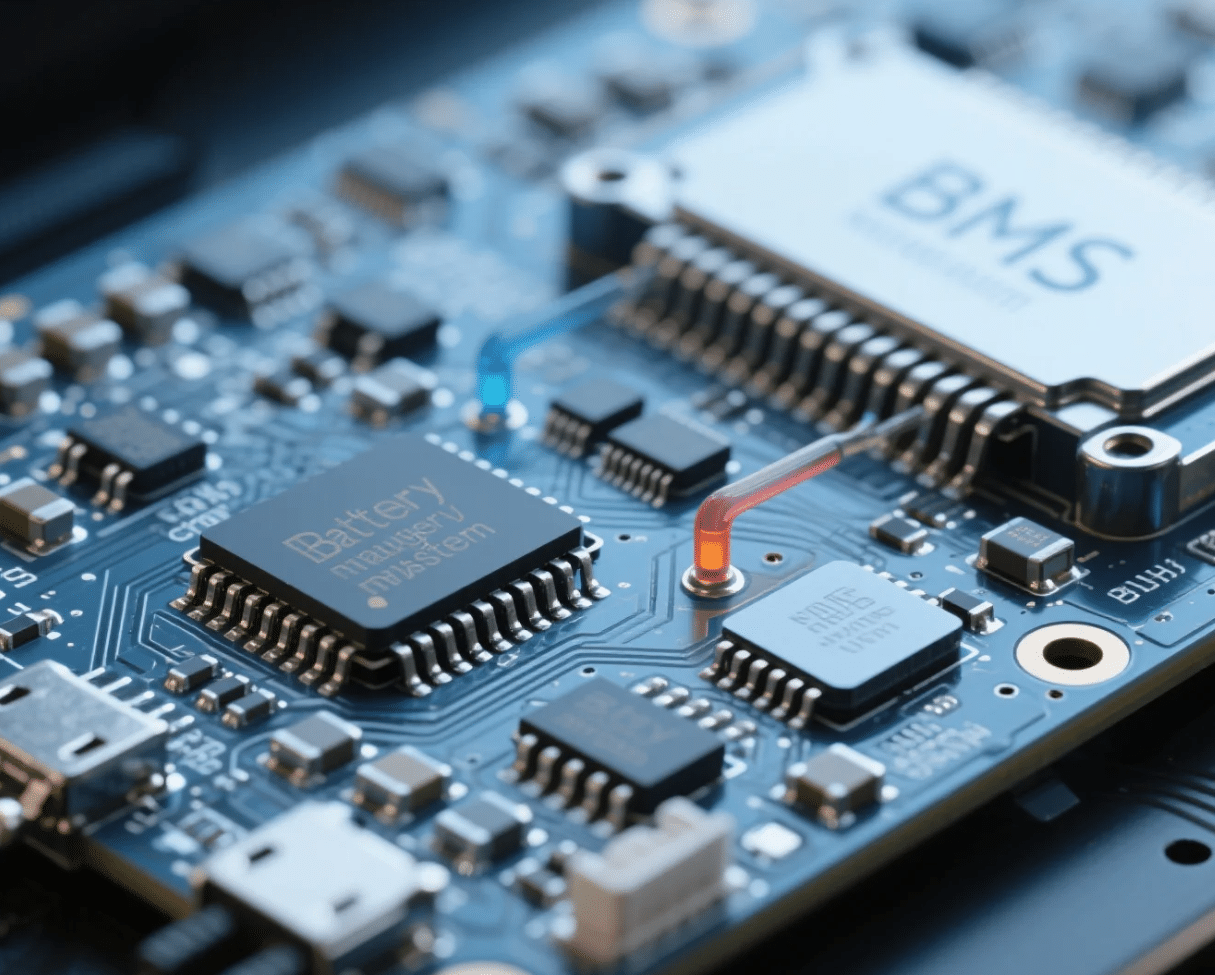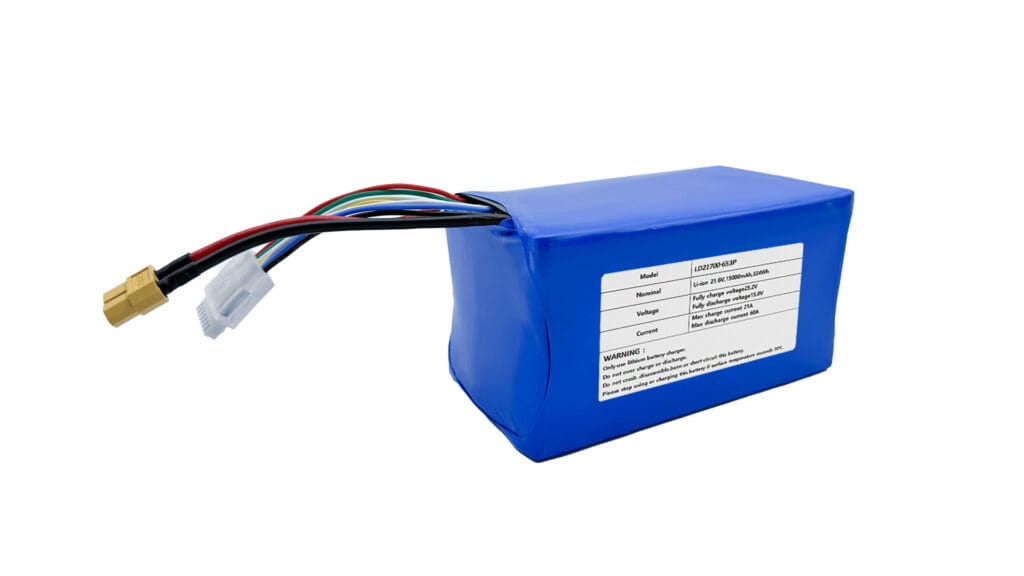In an increasingly electrified world, batteries are the unsung heroes powering everything from our smartphones to the burgeoning fleet of electric vehicles and large-scale energy storage solutions. But these electrochemical powerhouses aren’t simply plug-and-play devices. They require intelligent oversight to ensure safety, optimize performance, and prolong their lifespan. This is where the Battery Management System (BMS) steps in – the sophisticated “brain” that monitors and controls every aspect of a rechargeable battery.
This comprehensive guide will delve into the intricacies of a BMS, exploring its core functions, essential components, and the paramount importance it holds in modern battery-powered technologies. Whether you’re an engineer, an EV enthusiast, or simply curious about the technology that powers our future, understanding the BMS is key.
What is BMS in Battery?
At its core, a Battery Management System (BMS) is an electronic system that manages a rechargeable battery pack, which can consist of multiple cells. Its primary role is to protect the battery from operating outside its safe operating area (SOA). Beyond just protection, a modern BMS also monitors the battery’s state, calculates secondary data, reports that data, controls its environment, authenticates it, and/or balances it.
Think of it as the guardian of the battery pack. Just as a human brain regulates bodily functions, the BMS diligently oversees the health and operation of the battery, preventing damage and ensuring efficient energy utilization. In high-stakes applications like electric cars, a robust BMS is not just beneficial – it’s absolutely essential for safety and reliability.
Core Functions of a BMS
A comprehensive BMS performs a multitude of critical functions:
Voltage Monitoring
One of the most fundamental tasks of a BMS is meticulously monitoring the voltage of each individual cell within the battery pack, as well as the overall pack voltage. Lithium-ion cells, commonly used in EVs and other high-performance applications, typically operate within a safe voltage window of approximately 2.5V to 4.2V. Operating outside these limits can lead to degradation or, in severe cases, safety hazards.
The BMS continuously checks these voltage levels. If a cell’s voltage exceeds the upper limit during charging, the BMS can signal the charger to stop or reduce the charging current. Conversely, if a cell’s voltage drops below the lower limit during discharge, the BMS can disconnect the load to prevent deep discharge, which can permanently damage the cell.
Temperature Monitoring
Temperature is another critical parameter affecting battery performance and safety. The BMS employs temperature sensors placed at various points within the battery pack to monitor thermal conditions. The optimal operating temperature range for many lithium-ion batteries is between 20°C and 40°C.
If the temperature rises excessively, perhaps due to high discharge rates or ambient conditions, the BMS can activate cooling systems or limit the current to prevent overheating and potential thermal runaway. Similarly, in very cold conditions, the BMS might restrict charging as charging lithium-ion batteries at low temperatures can cause lithium plating, reducing lifespan.
Current Monitoring
The BMS precisely measures the current flowing into and out of the battery pack. This information is vital for several reasons, including preventing over-current conditions during both charging and discharging. Exceeding the specified charge or discharge current limits (often defined by C-rates) can generate excessive heat and damage the battery cells. The BMS acts as a safeguard by interrupting the current flow if it exceeds safe thresholds.
State of Charge (SoC) and State of Health (SoH) Estimation
The BMS plays a crucial role in estimating two key metrics:
- State of Charge (SoC): This indicates the remaining capacity of the battery, often expressed as a percentage (0% to 100%). Accurate SoC estimation is essential for providing users with reliable information about the remaining range in an EV or the runtime of a portable device.
- State of Health (SoH): This is a measure of the battery’s overall condition compared to its original state. SoH typically degrades over time and with usage cycles. A BMS tracks parameters like capacity fade and internal resistance to estimate the SoH, providing an indication of when a battery might be nearing the end of its useful life. Batteries typically lose 1−2% of their capacity per year or per a certain number of cycles.
Cell Balancing
In battery packs consisting of multiple cells connected in series, individual cells can exhibit slight differences in capacity or self-discharge rates. Over time, these discrepancies can lead to imbalances, where some cells become fully charged while others are not, or some become over-discharged while others still have capacity. This imbalance reduces the overall usable capacity of the battery pack and can stress individual cells.
The BMS employs cell balancing techniques to address this. In passive balancing, excess charge from higher-voltage cells is dissipated as heat through resistors. In active balancing, charge is redistributed from stronger cells to weaker ones, which is generally more efficient. By ensuring all cells operate within a similar voltage range, cell balancing maximizes the pack’s capacity and extends its lifespan.
Components of a Typical BMS
To perform these crucial functions, a typical BMS comprises several key hardware components:
- Sensing Circuits: These include voltage sensors for each cell and the overall pack, current sensors to measure charge and discharge rates, and temperature sensors strategically placed throughout the battery pack.
- Microcontroller/Processor: This is the “brain” of the BMS, receiving and processing data from the sensing circuits. It runs algorithms to estimate SoC and SoH, implement control strategies for charging and discharging, and manage cell balancing.
- Power Switches (MOSFETs, Relays): These are used to control the flow of current, allowing the BMS to disconnect the battery pack in case of faults (e.g., over-voltage, under-voltage, over-current) or to enable/disable charging and discharging.
- Communication Interface: This allows the BMS to communicate with other systems in the vehicle or device, such as the motor controller in an EV or the power management unit in a laptop. Common protocols include CAN bus.
- Memory: Used to store critical data such as battery history, calibration parameters, and diagnostic information.
The Importance of BMS
The Battery Management System is not merely an accessory; it is a cornerstone of safe, efficient, and long-lasting battery-powered systems. Its importance can be summarized in three key areas:
- Safety: By continuously monitoring voltage, temperature, and current, the BMS prevents hazardous conditions like thermal runaway, fires, and explosions, which are critical concerns with high-energy-density batteries.
- Performance: Through cell balancing and optimized charging/discharging control, the BMS ensures that the battery pack operates at its peak efficiency, maximizing range in EVs and runtime in other applications.
- Longevity: By preventing operation outside safe limits and promoting cell balance, the BMS significantly extends the lifespan of the battery pack, which is often the most expensive component in a system.
Applications of BMS
The need for effective Battery Management Systems spans a wide range of applications:
- Electric Vehicles (EVs): Managing large, high-voltage battery packs is paramount for the safety, performance (range, power), and longevity of EVs.
- Portable Electronics (laptops, smartphones): Ensuring safe charging and discharging, and providing accurate battery level indications are crucial for user experience and device safety.
- Grid-Scale Energy Storage: Large battery systems used for grid stabilization require sophisticated BMS for safety and to optimize energy dispatch.
- Power Tools: Protecting batteries from over-discharge during heavy use and ensuring a long service life.
- Uninterruptible Power Supplies (UPS): Monitoring battery health and ensuring reliable backup power.
Conclusion
The Battery Management System is the unsung hero behind the seamless operation of our battery-powered world. More than just a protective circuit, it’s an intelligent system that optimizes performance, enhances safety, and extends the life of rechargeable batteries. As battery technology continues to advance and become even more integral to our daily lives, the sophistication and importance of the BMS will only continue to grow. Understanding its role is crucial for appreciating the complexities and the potential of modern energy storage solutions.
Looking for a reliable and customizable Battery Management System for your power needs? Contact us at info@landazzle.com to explore the advanced BMS solutions offered by LanDazzle. Discover how our innovative technology can optimize the performance and safety of your battery systems.
FAQ
-
What is the primary function of a BMS? The primary function is to protect the battery pack from operating outside its safe operating area, ensuring safety and preventing damage.
-
What does SoC stand for in a BMS? SoC stands for State of Charge, which indicates the remaining capacity of the battery.
-
Why is cell balancing important? Cell balancing ensures that all cells in a battery pack are utilized effectively, maximizing the overall capacity and lifespan of the pack.
-
What are some key parameters monitored by a BMS? Key parameters include voltage, temperature, and current of the battery cells and pack.
-
Is a BMS only used in electric vehicles? No, BMS is used in a wide range of applications that utilize rechargeable batteries, including laptops, smartphones, grid-scale energy storage, and power tools.
-
What is SoH in the context of a battery? SoH stands for State of Health, which is a measure of the battery’s overall condition compared to its original state.





-scaled.jpg)